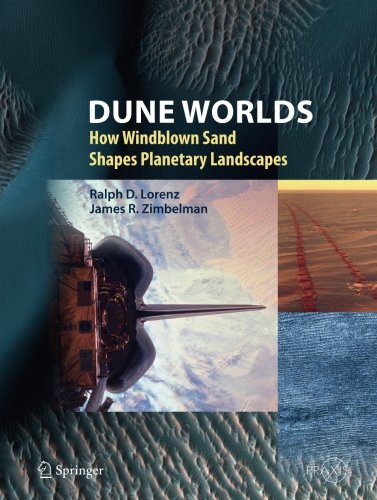
Dune Worlds:How Windblown Sand Shapes Planetary Landscapes(Geophysical Sciences)
天文学史
¥
1295
售 价:
¥
1036.00
优惠
平台大促 低至8折优惠
发货周期:外国库房发货,通常付款后3-5周到货
出版时间
2016年09月03日
装 帧
页 码
308
开 本
11.02 x 8.27 x 0.69
语 种
英文
综合评分
暂无评分
- 图书详情
- 目次
- 买家须知
- 书评(0)
- 权威书评(0)
图书简介
This book describes how sand dunes work, why they are the way they are in different settings, and how they are being studied. Particular attention is paid to their formation and appearance elsewhere in the solar system. New developments in knowledge about dunes make for an interesting story ? like the dunes themselves, dune science is dynamic ? and the visual appeal of Aeolian geomorphology ensures that this is an attractive volume. The book is divided into 4 parts, the first of which introduces dunes as a planetary phenomenon, showing a landscape reflecting the balance of geological processes ? volcanism, impact, tectonics, erosion, deposition of sediments. Dunes are then considered as emergent dynamical systems: the interaction of sand and wind conspires to generate very characteristic and reproducible shapes. Analogies are given with other emergent structures such as patterned ground before the influence of dunes on desert peoples and infrastructure is studied, together with their use as forensic climatological indicators.Dune Physics is looked at with regard to the mechanics of sand, the physics of wind, saltation ? interaction of sand and air ? dunes versus ripples and transverse Aeolian ridges, the classification of dune morphology and the sources and sinks of sand. Dune Trafficability considers soil mechanics, effects on mobility on Earth, Mars and elsewhere.In the second part, Earth, Mars, Titan and other moons and planets are examined, beginning with a survey of the major deserts and dunefields on Earth. The authors then turn to Mars and its environment, sediment type, dune stratigraphy, sediment source and sinks and the association of dunes with topographic features. Titan follows - its thick, cold atmosphere, methane dampness, low gravity, morphology ? interaction with topography and the implications of dunes for climate and winds. Dunes elsewhere conclude this part. There are few dunefields on Venus, but there is a .possibility of Aeolian transport on Triton and volcanic-related windstreaks on Io.
本书暂无推荐
本书暂无推荐















